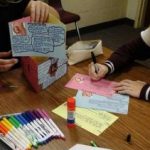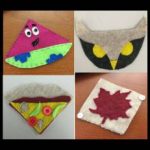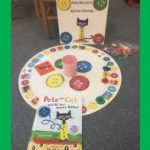
After teaching my students about Howard Gardener’s Multiple Intelligence Theory, I wanted them to imagine they were a preschool teacher and had to develop activities around a particular children’s theme, incorporating each of the 8 multiple intelligences. After randomly selecting a theme, students create a theme board to share their ideas. In addition, students must explain how each of the activities selected relates to the multiple intelligence they’ve partnered it with. If your students are actually teaching in pre-school programs, this would be a great planning tool for them to utilize.










